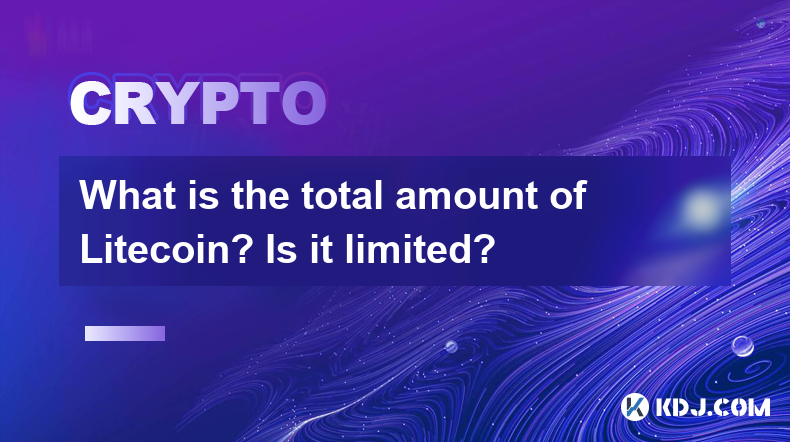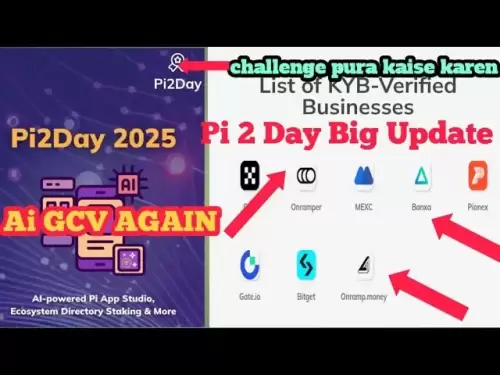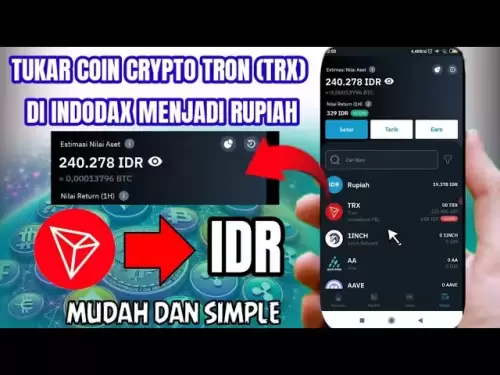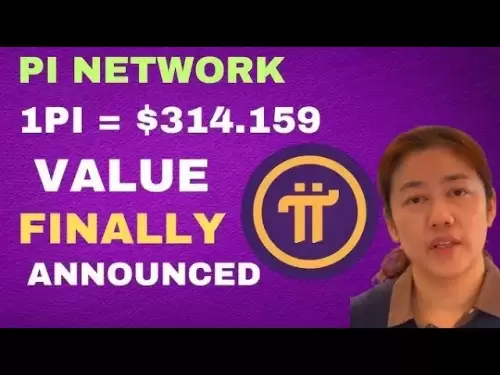-
 Bitcoin
Bitcoin $108,489.6704
1.13% -
 Ethereum
Ethereum $2,502.0528
2.92% -
 Tether USDt
Tether USDt $1.0002
0.00% -
 XRP
XRP $2.1941
0.51% -
 BNB
BNB $655.3375
1.00% -
 Solana
Solana $151.5977
1.27% -
 USDC
USDC $0.9999
0.00% -
 TRON
TRON $0.2768
0.32% -
 Dogecoin
Dogecoin $0.1676
2.86% -
 Cardano
Cardano $0.5675
0.98% -
 Hyperliquid
Hyperliquid $40.6109
7.48% -
 Bitcoin Cash
Bitcoin Cash $500.7746
2.09% -
 Sui
Sui $2.8328
2.03% -
 Chainlink
Chainlink $13.4452
1.26% -
 UNUS SED LEO
UNUS SED LEO $9.1623
0.39% -
 Avalanche
Avalanche $18.2267
2.24% -
 Stellar
Stellar $0.2382
0.00% -
 Toncoin
Toncoin $2.8885
1.68% -
 Shiba Inu
Shiba Inu $0.0...01159
0.91% -
 Litecoin
Litecoin $87.1827
0.88% -
 Hedera
Hedera $0.1511
2.90% -
 Monero
Monero $315.4992
-0.59% -
 Polkadot
Polkadot $3.4663
2.34% -
 Bitget Token
Bitget Token $4.6118
-0.65% -
 Dai
Dai $1.0000
-0.01% -
 Ethena USDe
Ethena USDe $1.0003
0.02% -
 Uniswap
Uniswap $7.2989
4.69% -
 Pepe
Pepe $0.0...01003
5.73% -
 Aave
Aave $275.5616
7.15% -
 Pi
Pi $0.5181
-2.49%
What is the total amount of Litecoin? Is it limited?
Litecoin's fixed supply of 84 million coins, unlike inflationary fiat currencies, creates scarcity. This, combined with halving events reducing new coin creation, contributes to its potential long-term value appreciation.
Mar 13, 2025 at 02:26 pm

Key Points:
- Litecoin's total supply is capped at 84 million coins.
- This fixed supply is a key differentiator from inflationary fiat currencies.
- The mining process, based on the Scrypt algorithm, determines the release of new Litecoins.
- Halving events periodically reduce the rate of new Litecoin creation.
- The limited supply contributes to Litecoin's potential value appreciation over time.
What is the total amount of Litecoin? Is it limited?
Litecoin (LTC), often dubbed "silver" to Bitcoin's "gold," operates on a fundamentally different economic model than many fiat currencies. Unlike fiat, which can be printed infinitely, Litecoin's total supply is capped. This hard cap is set at a maximum of 84 million LTC. This inherent scarcity is a core feature designed to control inflation and potentially increase value over time as demand increases.
The limited supply is a crucial aspect of Litecoin's design philosophy. It seeks to mirror the scarcity of precious metals, providing a predictable and controlled monetary policy within the cryptocurrency space. This stands in contrast to inflationary systems where the currency supply can be manipulated, potentially leading to devaluation.
The creation of new Litecoins is governed by a process called mining. Unlike Bitcoin which utilizes the SHA-256 algorithm, Litecoin employs the Scrypt algorithm. This algorithm, while computationally intensive, is designed to be more resistant to specialized mining hardware, aiming for a more decentralized mining network.
The rate at which new Litecoins are generated isn't constant. It follows a pre-programmed schedule known as "halving." Every four years, approximately, the block reward – the number of Litecoins awarded to miners for verifying transactions – is cut in half. This halving mechanism gradually reduces the rate of new Litecoin creation, further contributing to the scarcity built into the system.
This halving process is a critical part of Litecoin's long-term monetary policy. It mimics the behavior of scarce resources, ensuring that the inflation rate steadily decreases over time. The predictable nature of the halving events provides a degree of certainty for investors and participants in the Litecoin ecosystem. This predictable deflationary pressure is often cited as a contributing factor to potential price appreciation.
The fixed supply of 84 million LTC is not merely a theoretical limit; it's a hard-coded constraint within the Litecoin protocol. This means that no additional Litecoins can ever be created beyond this limit. This fundamental characteristic differentiates it from many other cryptocurrencies and traditional financial systems. The immutable nature of this limit provides a degree of confidence and stability to the system.
The fixed supply of Litecoin, coupled with its mining algorithm and halving schedule, contributes to its overall scarcity and potential long-term value. Understanding this fundamental aspect of Litecoin is crucial for anyone considering investing in or participating in the Litecoin network. The fixed supply is a cornerstone of its design, and it significantly impacts its economic model and potential future value.
The precise timing of the halving events is determined by the block generation time. While approximately every four years, the exact date may vary slightly due to fluctuations in network hash rate. This variation is inherent in the decentralized nature of the blockchain technology underlying Litecoin.
The limited supply also has implications for the long-term usability of Litecoin. As the number of users increases, the fixed supply could potentially lead to increased competition for a finite number of coins, potentially driving up the price. However, this also presents potential challenges, as increased price could limit accessibility for some users.
Frequently Asked Questions:
Q: When will Litecoin reach its maximum supply?
A: Litecoin's maximum supply of 84 million coins is already defined within its code. It won't be "reached" in a single moment, but rather asymptotically approached as the halving events continue to reduce the rate of new coin creation. The final coin is expected to be mined sometime in the distant future.
Q: Does the halving affect the price of Litecoin?
A: Historically, Litecoin halving events have often been associated with price increases. The reduced supply of new coins entering the market can create upward pressure on the price, particularly if demand remains strong or increases. However, price is influenced by numerous market factors, and the halving is just one of them.
Q: How does Litecoin's limited supply compare to Bitcoin?
A: Both Litecoin and Bitcoin have fixed maximum supplies. Bitcoin has a cap of 21 million coins, while Litecoin has a cap of 84 million. This difference in maximum supply contributes to their differing market dynamics and potential price behaviors.
Q: Can the Litecoin supply ever be increased?
A: No. The 84 million coin limit is hard-coded into the Litecoin protocol. Changing this would require a significant and unlikely consensus among the Litecoin community and would fundamentally alter the nature of the cryptocurrency.
Q: What is the significance of the Scrypt algorithm in relation to the limited supply?
A: The Scrypt algorithm is crucial because it affects the mining process and the rate at which new Litecoins are generated. While it doesn't directly determine the total supply, it influences the speed at which that supply is reached, indirectly impacting the timing of halving events and the overall scarcity dynamic.
Disclaimer:info@kdj.com
The information provided is not trading advice. kdj.com does not assume any responsibility for any investments made based on the information provided in this article. Cryptocurrencies are highly volatile and it is highly recommended that you invest with caution after thorough research!
If you believe that the content used on this website infringes your copyright, please contact us immediately (info@kdj.com) and we will delete it promptly.
- Ripple, Stablecoin, Adoption: RLUSD Leading the Charge
- 2025-06-30 14:30:12
- Bitcoin ETF, IBIT, and the Bull Flag: Is $144,000 on the Horizon?
- 2025-06-30 14:50:12
- Bitcoin, Passive Income, and a Bull Raise: Riding the Crypto Wave
- 2025-06-30 14:30:12
- FxWirePro: Optimism (OP) Token Unlock Looms – Will It Sink or Swim?
- 2025-06-30 15:47:14
- Bitcoin, Personal Loans, and Omega 88: A New Era in Lending?
- 2025-06-30 15:09:14
- Saylor's Strategy: How MicroStrategy's Bitcoin Bet is Reshaping Finance
- 2025-06-30 14:52:14
Related knowledge

How to customize USDT TRC20 mining fees? Flexible adjustment tutorial
Jun 13,2025 at 01:42am
Understanding USDT TRC20 Mining FeesMining fees on the TRON (TRC20) network are essential for processing transactions. Unlike Bitcoin or Ethereum, where miners directly validate transactions, TRON uses a delegated proof-of-stake (DPoS) mechanism. However, users still need to pay bandwidth and energy fees, which are collectively referred to as 'mining fe...

USDT TRC20 transaction is stuck? Solution summary
Jun 14,2025 at 11:15pm
Understanding USDT TRC20 TransactionsWhen users mention that a USDT TRC20 transaction is stuck, they typically refer to a situation where the transfer of Tether (USDT) on the TRON blockchain has not been confirmed for an extended period. This issue may arise due to various reasons such as network congestion, insufficient transaction fees, or wallet-rela...

How to cancel USDT TRC20 unconfirmed transactions? Operation guide
Jun 13,2025 at 11:01pm
Understanding USDT TRC20 Unconfirmed TransactionsWhen dealing with USDT TRC20 transactions, it’s crucial to understand what an unconfirmed transaction means. An unconfirmed transaction is one that has been broadcasted to the blockchain network but hasn’t yet been included in a block. This typically occurs due to low transaction fees or network congestio...

How to check USDT TRC20 balance? Introduction to multiple query methods
Jun 21,2025 at 02:42am
Understanding USDT TRC20 and Its ImportanceUSDT (Tether) is one of the most widely used stablecoins in the cryptocurrency market. It exists on multiple blockchain networks, including TRC20, which operates on the Tron (TRX) network. Checking your USDT TRC20 balance accurately is crucial for users who hold or transact with this asset. Whether you're sendi...

What to do if USDT TRC20 transfers are congested? Speed up trading skills
Jun 13,2025 at 09:56am
Understanding USDT TRC20 Transfer CongestionWhen transferring USDT TRC20, users may occasionally experience delays or congestion. This typically occurs due to network overload on the TRON blockchain, which hosts the TRC20 version of Tether. Unlike the ERC20 variant (which runs on Ethereum), TRC20 transactions are generally faster and cheaper, but during...

The relationship between USDT TRC20 and TRON chain: technical background analysis
Jun 12,2025 at 01:28pm
What is USDT TRC20?USDT TRC20 refers to the Tether (USDT) token issued on the TRON blockchain using the TRC-20 standard. Unlike the more commonly known ERC-20 version of USDT (which runs on Ethereum), the TRC-20 variant leverages the TRON network's infrastructure for faster and cheaper transactions. The emergence of this version came as part of Tether’s...

How to customize USDT TRC20 mining fees? Flexible adjustment tutorial
Jun 13,2025 at 01:42am
Understanding USDT TRC20 Mining FeesMining fees on the TRON (TRC20) network are essential for processing transactions. Unlike Bitcoin or Ethereum, where miners directly validate transactions, TRON uses a delegated proof-of-stake (DPoS) mechanism. However, users still need to pay bandwidth and energy fees, which are collectively referred to as 'mining fe...

USDT TRC20 transaction is stuck? Solution summary
Jun 14,2025 at 11:15pm
Understanding USDT TRC20 TransactionsWhen users mention that a USDT TRC20 transaction is stuck, they typically refer to a situation where the transfer of Tether (USDT) on the TRON blockchain has not been confirmed for an extended period. This issue may arise due to various reasons such as network congestion, insufficient transaction fees, or wallet-rela...

How to cancel USDT TRC20 unconfirmed transactions? Operation guide
Jun 13,2025 at 11:01pm
Understanding USDT TRC20 Unconfirmed TransactionsWhen dealing with USDT TRC20 transactions, it’s crucial to understand what an unconfirmed transaction means. An unconfirmed transaction is one that has been broadcasted to the blockchain network but hasn’t yet been included in a block. This typically occurs due to low transaction fees or network congestio...

How to check USDT TRC20 balance? Introduction to multiple query methods
Jun 21,2025 at 02:42am
Understanding USDT TRC20 and Its ImportanceUSDT (Tether) is one of the most widely used stablecoins in the cryptocurrency market. It exists on multiple blockchain networks, including TRC20, which operates on the Tron (TRX) network. Checking your USDT TRC20 balance accurately is crucial for users who hold or transact with this asset. Whether you're sendi...

What to do if USDT TRC20 transfers are congested? Speed up trading skills
Jun 13,2025 at 09:56am
Understanding USDT TRC20 Transfer CongestionWhen transferring USDT TRC20, users may occasionally experience delays or congestion. This typically occurs due to network overload on the TRON blockchain, which hosts the TRC20 version of Tether. Unlike the ERC20 variant (which runs on Ethereum), TRC20 transactions are generally faster and cheaper, but during...

The relationship between USDT TRC20 and TRON chain: technical background analysis
Jun 12,2025 at 01:28pm
What is USDT TRC20?USDT TRC20 refers to the Tether (USDT) token issued on the TRON blockchain using the TRC-20 standard. Unlike the more commonly known ERC-20 version of USDT (which runs on Ethereum), the TRC-20 variant leverages the TRON network's infrastructure for faster and cheaper transactions. The emergence of this version came as part of Tether’s...
See all articles

























































































